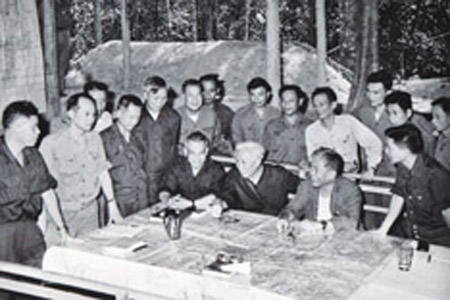With the explosion of technology in our age of telecommunications, geographic determinism is losing more and more ground. Nonetheless, an understanding of geopolitics, freed of its fascist overtones (a la K. Haushofer), is still indispensable for an understanding of the development of the present-day world.
Although I am far from being a specialist in geopolitics,
I nevertheless think that each nation follows a politico- geographic course.
Thus, between the 10th and 13th centuries, the German people followed a march to the east (Drang nach Osten), between the Elba and the Oder, and on to the shores of the Baltic, to the detriment of the Slavs and the Baltic peoples. Later, also in the East, Russia was a magnet attracting Hitler.
The development of the American people, on the other hand, was to the West, the Far West, from the Atlantic to the Pacific.
The history of France from the Capetians on followed a centrifugal movement, with Ile-de-France as its axis.
As for Vietnam, bearing the enormous weight of China to the north, and hemmed in between the Truong Son Mountains to the west and the Pacific to the east there was only one direction open: south. The Viets, ethnic majority and spearhead of the Vietnamese nation, first moved their settlements into the Red River delta.
They were loath to assault the malaria-infested, spirit- haunted mountains. Neither was the sea to the east tempting to this agrarian people, who did not share the maritime calling of the Malays.
The Viets preferred to advance to the south, across the Transversal Pass (Deo Ngang), constantly following the chain of coastal plains. This Drang nach Sueden begun in the 11th century, by the 17th century had reached the Mekong delta.
Its justification was not only the need to expand the rice fields, but also the need to develop sufficient economic and military potential to resist the powerful Champa and Khmer states to the south and west.
This agricultural colonization was carried out over the centuries by the proliferation of villages, the basic units of traditional Vietnamese society.

